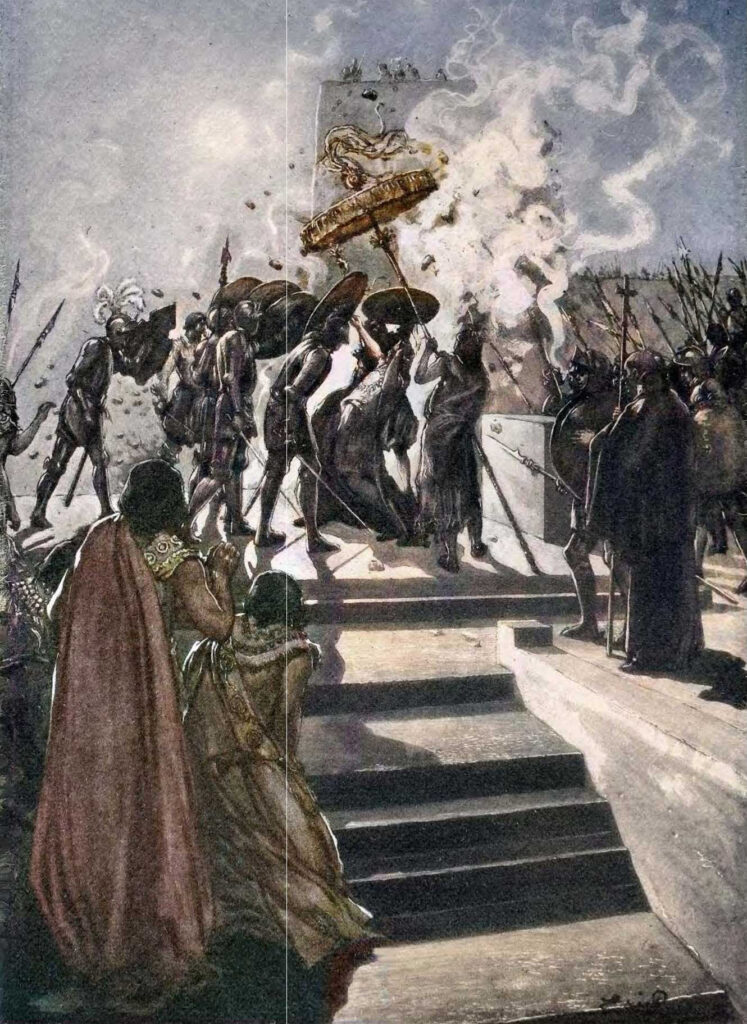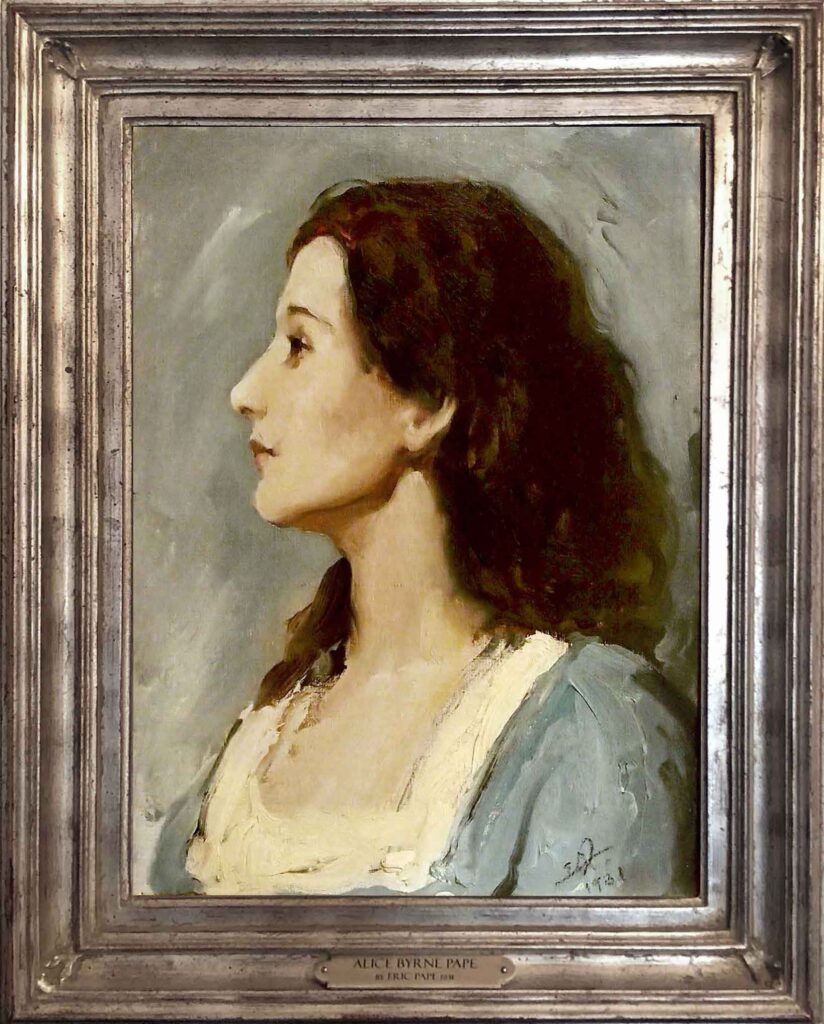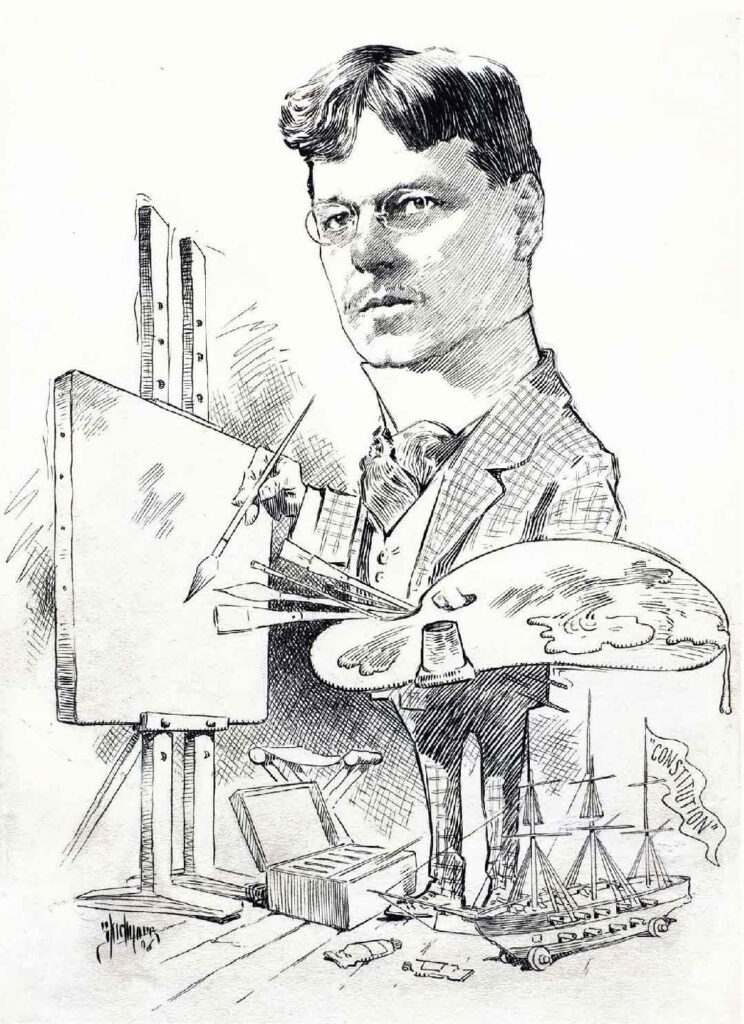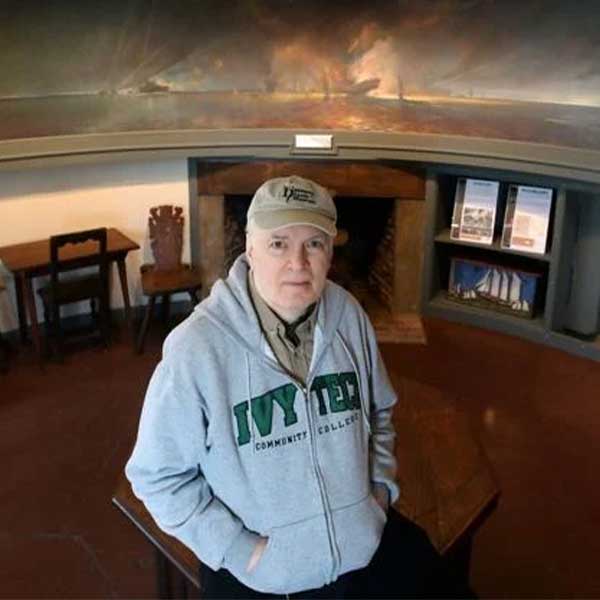About the Artist
Eric Pape | The Master of the Pageant
Meet Eric Pape,
Painter Sculptor Illustrator Teacher
Pape, an American artist whose talents spanned painting, illustration, sculpture, and even theatrical set design.
Celebrated for his bold imagination and technical brilliance, Pape brought history, literature, and everyday life to vivid form. He was not only a painter but also a storyteller, designer, and teacher, whose career bridged continents and artistic disciplines.
His legacy shines as a testament to boundless creativity and artistic courage.
Eric Pape: An Artist’s Journey
THE EARLY YEARS OF PAPE
Formative Days in San Francisco & Paris
Eric Pape, born Frederick Ludwig Moritz Pape Jr. on October 17, 1870, in San Francisco, was the son of Friederich Ludwig Pape, a grocer and liquor merchant, and Maria Meier, both of whom had emigrated the the United States from Germany.
He grew up in the family’s modest home on Leavenworth Street, helping with the family business while pursuing an early and determined interest in art.
As a teenager, Pape enrolled at the San Francisco School of Design, studying under the noted painter Emil Carlsen. Even then, his ambitions reached far beyond the West Coast. At the age of 18, he left San Francisco for Paris, a bold journey that would shape the rest of his life.
In Paris, Pape immersed himself in the world of European art. He trained at the École des Beaux-Arts under the legendary Jean-Léon Gérôme and continued his studies at the Académie Julian with Jules Lefebvre, Benjamin Constant, and Jean-Paul Laurens. These years honed his technical skill while encouraging a spirit of adventure and creative risk-taking.
It was also in Paris that Pape met fellow artist Alice Monroe, a talented painter and musician. Their shared love of art brought them together, and the two married in Dover, New Hampshire, in August 1894. Alice would remain an important creative and emotional anchor during the most ambitious years of his career.
AN ADVENTUROUS ARTIST
European Journeys and Early Acclaim
Pape’s wanderlust took him beyond Paris to northern Germany in 1889, where he lived among rural communities and immersed himself in the culture of everyday life.
Living in a rural village life, he painted The Young Spinner of Zeven, a Salon-scale work filled with warmth and humanity. The piece debuted at the Société Nationale des Beaux-Arts in Paris and later earned a medal at the 1894 California Midwinter Exposition, firmly establishing Pape as a young artist of international promise.
But it was his journey to Egypt in 1890 that left an indelible mark on his art. For two years, Pape lived near the Great Pyramid and the Sphinx, sketching by day, absorbing local traditions, and writing vivid accounts of the golden light over the desert at night.
His depictions of Egyptian landscapes and monuments, shown in Paris, Cairo, and at the 1893 Chicago World’s Columbian Exposition, are infused with both awe and intimacy, revealing the perspective of an artist who wasn’t merely a visitor, but a participant in the life and atmosphere of the place.

BUILDING A LEGACY
His Return to America
When Pape returned to America in 1894, he brought with him a portfolio steeped in the Old World yet charged with fresh vision. That same year, he married fellow illustrator Alice Monroe, and the two settled in Boston.
After teaching briefly at Cowles Art School, Pape founded the Eric Pape School of Art in 1898, which become the largest art school in Boston. Among his students was a young N.C. Wyeth, who would go on to become one of America’s most celebrated illustrators.
Pape’s work as an illustrator flourished. He contributed to Scribner’s, Cosmopolitan, The Century Magazine, and others, bringing literature to life with his distinctive visual storytelling. His illustrated editions of The Turn of the Screw (1898), The Fair God (1898), and The Poems of Madison Cawein (1907) combined narrative depth with artistic elegance. One of his most enchanting projects was his work on Rip Van Winkle, where his illustrations captured both the whimsy and quiet melancholy of Washington Irving’s timeless tale.
A DIVERSE PERCEPTION OF ART
A Versatile Creative Force
Pape’s creativity was never confined, and no medium was out of his reach. He brought his eye for drama and detail to stage design, creating evocative sets for productions such as Trilby in 1898 and Percy Mackaye’s Canterbury Pilgrims in 1909, staged in honor of President Taft.
In 1906, his sense of civic duty intersected with his artistry in a remarkable way. Distressed by the deteriorating condition of the USS Constitution, he designed an illuminated scroll petition, 170 feet long and adorned with elaborate illustrations, calling for its preservation. Bearing 30,000 signatures, the scroll was presented to Congress and helped secure the ship’s restoration.
The work was as much a political tool as it was a piece of art, a testament to Pape’s belief that creativity could serve the public good.
Beyond stage design, Pape also devoted himself to mural painting, portraiture, illustration, and sculpture, leaving behind striking works that captured both historical grandeur and personal intimacy.
His versatility allowed him to move fluidly between mediums—whether illustrating for books, or painting on vast canvases, always guided by imagination, detail, and a restless pursuit of new artistic challenges.

OVERCOMING STRUGGLES
Personal Loss and Resilience in Gloucester
Eric and Alice built their life in Gloucester and Boston, and had a son, Moritz. The tragedy of losing their stillborn daughter in 1902 and then Alice herself in 1911 deeply affected Eric, not only emotionally, but physically, as he suffered a nervous breakdown in the aftermath. A decade later, he found companionship again, marrying actress and children’s author Alice Byrne in 1920.
During his years of grief, Pape found support from the Hammond family in Gloucester. As summer residents and patrons, they offered shelter and community. The Hammonds even “adopted” his son Moritz when Eric was recovering from his nervous breakdown.
It was in Gloucester that Pape continued his creative pursuits painting portraits, organizing pageants, and even completing the vibrant mural Wireless Naval Battle on Gloucester Bay for Hammond Castle

A RENAISSANCE
Later Years, Legacy, and Rediscovery
Pape’s later career was diverse and prolific. During the Great Depression, he produced portraits for the New York Herald Tribune, applying the same sensitivity he once reserved for historical subjects to the faces of his contemporaries. He remained active in professional circles, holding memberships with The Players, the Royal Society of Arts, and the United Arts Club of London.
On November 4, 1938, Pape suffered a heart attack in New York City and passed away three days later at the age of 68. His works, paintings, illustrations, stage designs, and public art are now held in institutions such as the Smithsonian’s National Portrait Gallery, the Library of Congress, the U.S. Naval Academy Museum, and the National Portrait Gallery in London.
Today, Eric Pape is remembered as an artist of breadth and heart, one who combined technical mastery with boundless curiosity. From his quiet studies of village life to his grand historical scenes, and from the Egyptian desert to the streets of Boston, his art remains a vivid record of a life fully lived.
It's an honor to tell the story of Eric Pape and preserve his work for furture generations to appreciate.
—Dr. Conn | Collector

